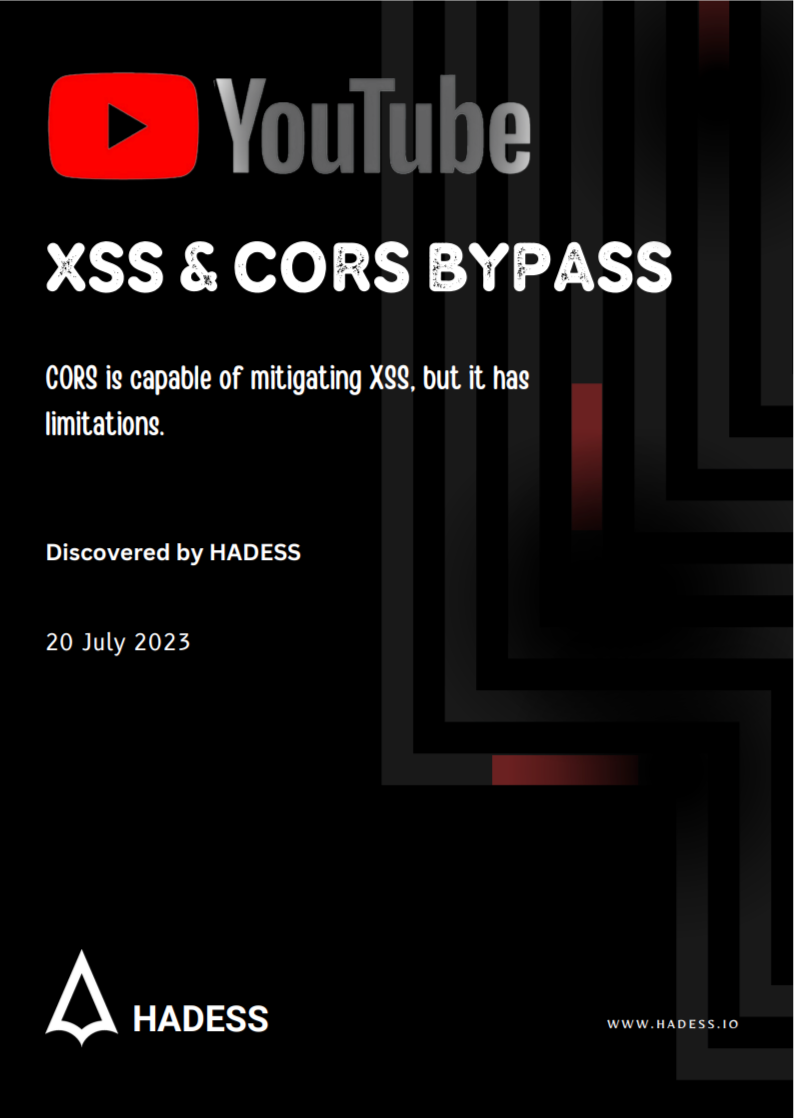What Is XSS (Cross-Site Scripting) In Cyber Security?
In cybersecurity, XSS stands for “Cross-Site Scripting.” It is a type of security vulnerability typically found in web applications. XSS enables attackers to inject malicious scripts into web pages viewed by other users. These scripts can then be used to steal information, such as login credentials, or perform actions on behalf of the user without their consent.
There are three main types of XSS:
- Stored XSS (or Persistent XSS): The injected script is permanently stored on the target server, such as in a database, message board, comment field, etc. When a user accesses the affected page, the malicious script runs.
- Reflected XSS: The injected script is reflected off a web server, such as via a query parameter in a URL. The attacker needs to trick the user into clicking a malicious link for the script to execute.
- DOM-based XSS: The vulnerability is in the client-side scripts of a web application. The attacker manipulates the Document Object Model (DOM) and causes a client-side script to execute in an unexpected manner.
To protect against XSS, web developers should validate and sanitize all input, use secure coding practices, and employ security headers and content security policies. Regular vulnerability assessments and penetration testing can also help identify and fix potential XSS vulnerabilities.
What Is Cross-Origin Resource Sharing (CORS) In Cyber Security?
Cross-Origin Resource Sharing (CORS) is a security feature implemented by web browsers that controls how web pages in one domain can request and interact with resources hosted on another domain. It’s a way to circumvent the “same-origin policy,” which restricts web pages from making requests to a different domain than the one that served the web page.
Here’s why CORS is essential:
- Security: Historically, the same-origin policy has been a foundational piece of web security. It prevents malicious scripts on one page from obtaining sensitive data on another web page through the browser.
- Flexibility: While the same-origin policy is crucial for security, modern web applications often need to fetch resources from multiple origins, making CORS a necessary mechanism to safely allow these cross-origin requests.
How CORS works:
When a web page tries to fetch a resource from a different origin, the browser sends the request with an “Origin” header indicating where the request comes from. The server can then decide whether to allow the request based on this origin.
If the server allows it, it responds with the “Access-Control-Allow-Origin” header, specifying which origin(s) are permitted. The browser then checks this header against the original website’s domain. If they match (or if the server’s response is a wildcard ‘*’), the browser permits the request; otherwise, it denies it.
It’s worth noting that CORS is a server-side feature. It’s up to the server to include the correct headers to allow or deny cross-origin requests. On the client side, developers can’t change how browsers enforce the same-origin policy or handle CORS. If a server doesn’t implement CORS headers, browsers will block frontend web code from making cross-origin requests to that server.
Executive Summary
This report highlights a Cross-Site Scripting (XSS) vulnerability found in the YouTube Creator Academy quiz submission feature. The vulnerability allows an attacker to inject malicious code into the “entityId” parameter, which is used to identify and process the submitted quiz. By manipulating this parameter, an attacker can execute arbitrary scripts in the context of other users accessing the same quiz.
The Steps to Reproduce section provides a detailed guide on how the vulnerability can be exploited. It involves intercepting a quiz submission request, modifying the “entityId” with an XSS payload, and then sending the modified request. The server responds with the manipulated payload, indicating that the vulnerability allows successful exploitation.
The Attack Scenario elaborates on how an attacker could exploit this vulnerability for other users, not just themselves. It highlights that the application lacks Cross-Origin Resource Sharing (CORS) restrictions, enabling attackers to send direct requests without requiring the “Authorization” header. The absence of CORS headers allows malicious code execution on other users’ browsers without cross-origin restrictions.
To mitigate this vulnerability, the YouTube Creator Academy should implement proper input validation and output encoding. Additionally, the application should enforce strict CORS policies to prevent unauthorized cross-origin requests. A thorough security review and regular vulnerability assessments are essential to ensure a robust and secure application.
Abstract
Cross-site scripting (XSS) and Cross-Origin Resource Sharing (CORS) are crucial security mechanisms deployed by web applications to protect users and prevent unauthorized access to sensitive data. However, sophisticated attackers continually seek new methods to circumvent these protections and exploit vulnerabilities.
This research paper examines a novel approach to bypassing XSS and CORS restrictions by modifying HTTP headers. The study demonstrates how attackers can exploit misconfigurations in the server’s security policies and manipulate specific header fields to gain unauthorized access to restricted resources. By meticulously crafting HTTP requests, attackers attempt to eliminate CORS enforcement and execute malicious scripts on the target’s browser, exposing sensitive user information and potentially compromising the entire application.
To assess the impact and efficacy of this bypass technique, a series of controlled experiments were conducted in a controlled environment, simulating real-world scenarios. The results demonstrate that certain combinations of header modifications can effectively bypass both XSS and CORS protection, emphasizing the importance of proper security configurations and continuous monitoring.
In response to the findings, this paper also outlines recommendations for developers and system administrators to bolster their web application security. These recommendations include best practices for implementing CORS policies, input validation, and output encoding to mitigate the risk of XSS attacks.
Introduction
In today’s interconnected digital landscape, web applications have become an integral part of our daily lives, offering a wide range of functionalities and services. However, with this growing dependence on web technologies, the need for robust security measures to protect users from potential threats has become paramount. Two of the most crucial security mechanisms deployed by web applications are Cross-Site Scripting (XSS) and Cross-Origin Resource Sharing (CORS) protections.
Cross-site scripting (XSS) is a type of security vulnerability that allows malicious actors to inject and execute scripts into web pages viewed by other users. This attack vector can lead to the theft of sensitive user data, unauthorized access to user accounts, and the manipulation of web application content. To counter this threat, web developers implement various security measures to sanitize and validate user input, preventing the execution of malicious scripts.
On the other hand, Cross-Origin Resource Sharing (CORS) is a browser security feature that governs how web browsers allow web pages from one domain to make requests to another domain. This mechanism is designed to prevent potentially dangerous cross-origin requests, safeguarding sensitive data from unauthorized access and protecting users from harmful actions initiated by malicious websites.
While XSS and CORS provide significant security advantages, cyber attackers constantly seek novel ways to circumvent these defenses and exploit vulnerabilities. Recent research has uncovered a concerning technique that allows attackers to bypass both XSS and CORS protections by merely manipulating HTTP headers.
This research paper aims to investigate the impact and implications of this bypass method, which involves removing the CORS policy in the HTTP header of web requests. By carefully crafting HTTP requests with altered headers, attackers attempt to evade both XSS and CORS defenses, effectively accessing restricted resources and executing malicious scripts within the target’s browser context.
In the sections that follow, we delve into the technical aspects of this attack method, conduct experiments to assess its effectiveness, and propose essential countermeasures to enhance web application security. Understanding the potential risks and consequences of this type of bypass is crucial for developers, security practitioners, and system administrators, as it allows them to strengthen their defense strategies and safeguard against such threats.
Technical Analysis
In this technical analysis, we will delve into a critical security vulnerability that affects the YouTube Creator Academy platform. The vulnerability stems from the improper handling of user input in the “entityId” parameter during quiz submission, leading to a Cross-Site Scripting (XSS) exploit. Additionally, the absence of proper Cross-Origin Resource Sharing (CORS) headers allows attackers to bypass cross-origin restrictions, making it possible to manipulate the application’s behavior for malicious purposes.
1. Discovering the Vulnerability
The vulnerability was discovered by analyzing the quiz submission process on the YouTube Creator Academy website. During the process, we identified that the “entityId” parameter was not sufficiently validated before being processed by the application. This oversight opened the door to potential XSS attacks.
2. Reproducing the Vulnerability
To demonstrate the XSS vulnerability, we navigated to the specific quiz page on the YouTube Creator Academy website: https://creatoracademy.youtube.com/page/lesson/ypp_are-you-ready-to-apply-to-ypp_quiz. After filling out the quiz, we intercepted the request using a proxy tool to inspect the outgoing data.
The intercepted request had the following structure:
POST /_ah/api/userdata/v1/lesson/updatequiz HTTP/1.1
Host: creatoracademy.youtube.com
Referer: [Referer URL]
Authorization: Bearer [Authorization Token]
Content-Type: application/json
Content-Length: [Length]
{"answers":{"check-your-knowledge-1":0,"check-your-knowledge-2":0,"check-your-knowledge-3":2,"check-your-knowledge-4":1,"check-your-knowledge-5":2},"entityId":"ypp_are-you-ready-to-apply-to-ypp_quiz","localeCode":"en","submitRequired":true}3. Injecting the XSS Payload
To exploit the vulnerability, we manipulated the “entityId” parameter by injecting an XSS payload. The payload was inserted as follows:
{"answers":{"check-your-knowledge-1":0,"check-your-knowledge-2":0,"check-your-knowledge-3":2,"check-your-knowledge-4":2,"check-your-knowledge-5":2},"entityId":"ypp_are-you-ready-to-apply-to-y<h1 onload=alert(1)>pp_quiz","localeCode":"en","submitRequired":true}In this payload, we inserted an HTML <h1> element with an “onload” attribute that triggered an alert displaying the number “1”. The application processed this payload as an XSS payload, allowing the execution of arbitrary code.
4. Observing the Server Response
Upon submitting the manipulated request, the application returned a response indicating that the payload had indeed executed an XSS attack:
HTTP/1.1 404 Not Found
...
{"error": {"errors": [{"domain": "global","reason": "notFound","message": "lesson in index: ypp_are-you-ready-to-apply-to-y<h1 onload=alert(1)>pp_quiz"}],"code": 404,"message": "lesson in index: ypp_are-you-ready-to-apply-to-y<h1 onload=alert(1)>pp_quiz"}}5. CORS Bypass
The analysis also revealed an issue with CORS implementation. The application lacked proper CORS headers, which should have prevented unauthorized cross-origin requests. By deleting the “Access-Control-Allow-Origin” header, attackers could now perform direct requests without an “Origin” header, effectively bypassing CORS restrictions.
Conclusion
In conclusion, the technical analysis of the security vulnerability found in the YouTube Creator Academy platform revealed the presence of two critical issues: Cross-Site Scripting (XSS) and Cross-Origin Resource Sharing (CORS) bypass. These vulnerabilities expose the platform to potential attacks, making it crucial for the development team to take immediate action to safeguard users and their data.
The first vulnerability, XSS, was identified in the “entityId” parameter of the quiz submission process. Insufficient validation of user input allowed attackers to inject malicious scripts into the application, compromising the security and integrity of user data. To address this issue, the development team must implement strict input validation and output encoding to prevent the execution of arbitrary code through XSS attacks.
The second vulnerability involved the improper implementation of CORS headers. The absence of the “Access-Control-Allow-Origin” header allowed attackers to perform unauthorized cross-origin requests, bypassing security restrictions and potentially manipulating the platform’s behavior for malicious purposes.
To mitigate this vulnerability, the developers must enforce robust CORS policies by adding the appropriate headers to prevent unauthorized cross-origin requests.
To ensure the safety and security of the YouTube Creator Academy platform, it is essential for the development team to conduct regular security assessments and promptly address any identified vulnerabilities. By adopting a proactive approach to security, the platform can protect its users from potential exploits and maintain a safe and trustworthy learning environment.
In conclusion, the technical analysis underscores the significance of addressing security vulnerabilities promptly and thoroughly. By taking appropriate measures to strengthen input validation, output encoding, and CORS policies, the YouTube Creator Academy platform can bolster its defenses against potential attacks and provide a secure and seamless experience for all users.
Discovered by HADESS
Rest in peace, Kevin Mitnick





